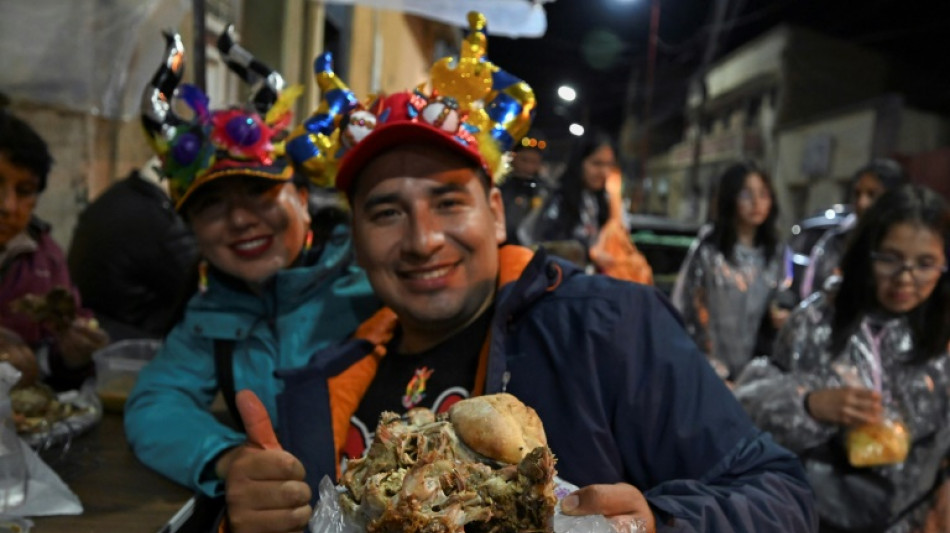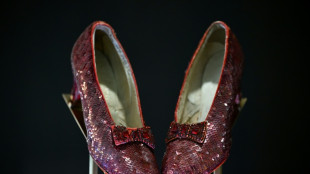

Lambs's head, a favorite dish for Bolivia's night owls
At a table on a street corner in Oruro in western Bolivia, night owls get ready to tuck into a favorite dish touted as a hangover cure: roasted lamb's head.
Late-night diners savor every part of the head, using their fingers to pull off bites of meat and brain.
Doris Cuba is "continuing the tradition" started by her grandmother in serving the dish every Friday to Sunday from 5:00 pm to 6:00 am.
"You will not find it anywhere else, even less so in a chic restaurant," said the 48-year-old, with a smile.
Once they have been cleaned and seasoned with salt, the lamb's heads are baked in a wood-fired oven for seven to eight hours, then eaten with bread and chilli pepper.
"My grandmother sold them wrapped in newspaper, with the skin, the wool and everything," said Cuba, who peels the baked skull while it is still hot and then breaks it open to make it easier to eat.
In her grandmother's era, customers would split the skulls themselves "on the ground or against a wall."
The sisters serve a steady stream of customers through the brisk nights of the Bolivian altiplano, which at 3,700 meters (12,000 feet) sees summer temperatures of between six and 19 degrees Celsius (42-66 degrees Fahrenheit).
On a recent evening, a dozen diners lined up in front of a steaming container full of cooked heads, eager to dig into meat tenderized by the long cooking time.
Customers use forks to pierce the lamb eyeballs, sending black liquid squirting from the pupils.
When bitten into, the texture resembles sweetbread.
The creamy consistency of the brain is "like butter," said Cuba's sister, 40-year-old Claudia Arispe.
But the tongue is most coveted and is known as the "dessert" of the head.
- 'I had to try it' -
"It's a sheep's head, but I had to try it," said student Angel Pacheco, 25, of his first taste of the dish.
Not just a Bolivian tradition, sheep's head is known as "smiley" in South Africa, so dubbed because of the way the animal's teeth are exposed as it's cooked.
"There's not much meat but the truth is that it's quite exquisite," said telecoms employee Ivan Nino de Guzman, 46.
He said it was important to eat the dish quickly so the meat does not go cold.
On public holidays, such as the Oruro carnival, Cuba said they can sell up to 200 roasted heads, at the equivalent of around $7 each.
It is enough to support two families and pay the business overheads.
The sisters refuse to reveal how they cook the heads -- a family secret handed down by their grandmother.
"It must be tender, you need a little lamb," said Cuba, whose daughters also work in the family business.
"They will sell when I can't... so we don't lose the family tradition."
The new generation also handles promotion on social media of the restaurant, named "Rostro Asado Dona Chavelita", or Mrs Chavelita's roasted head, in tribute to the sisters' grandmother.
L.A. Beltran--LGdM




